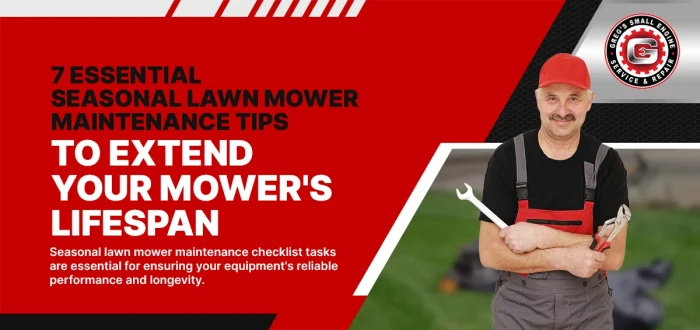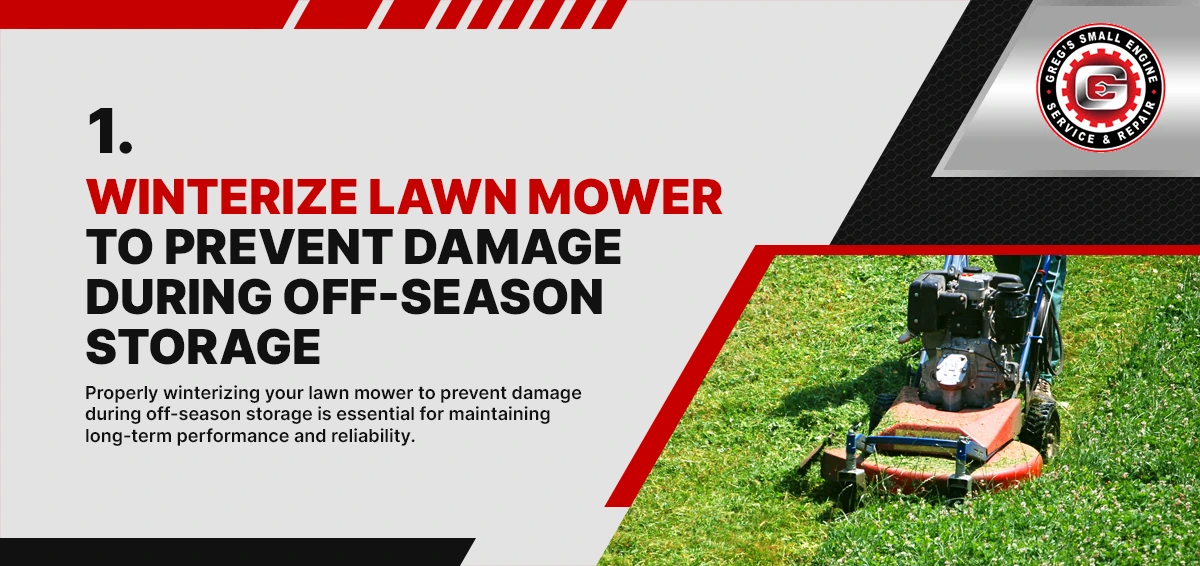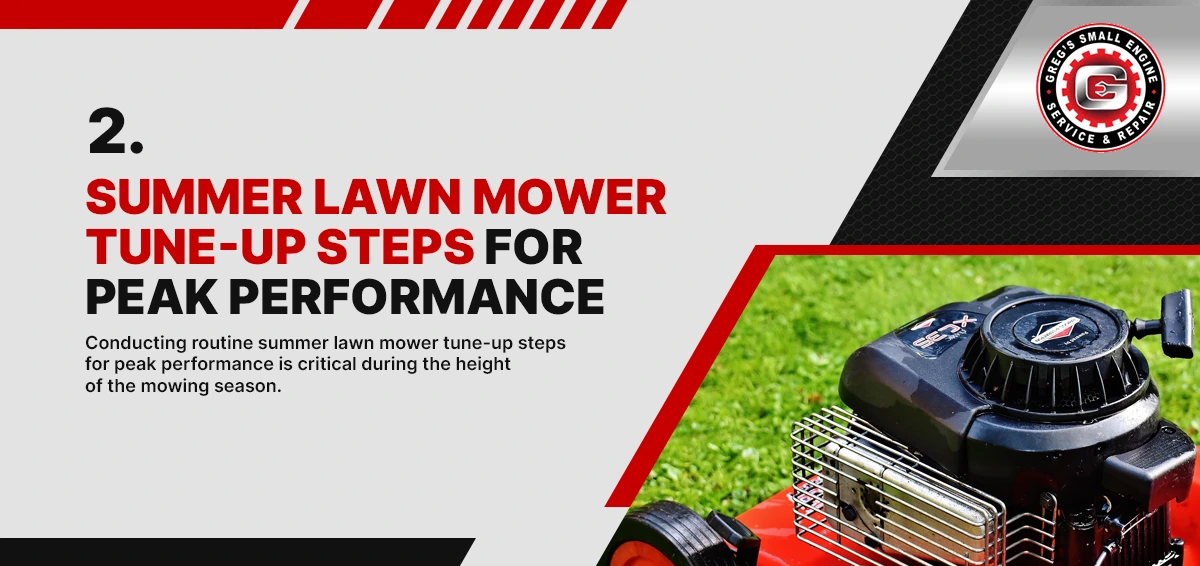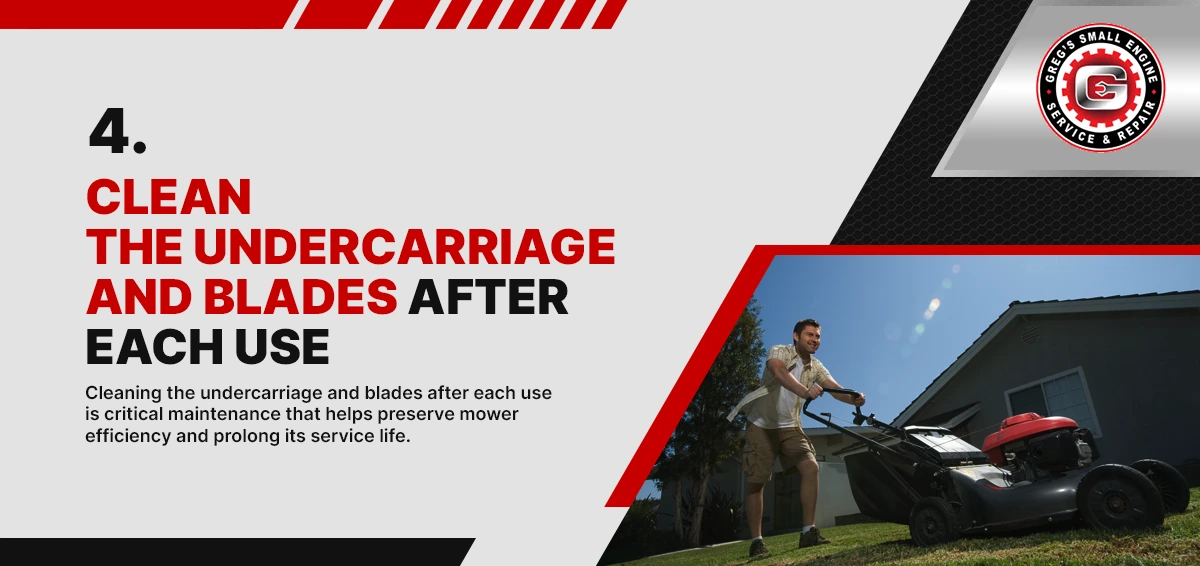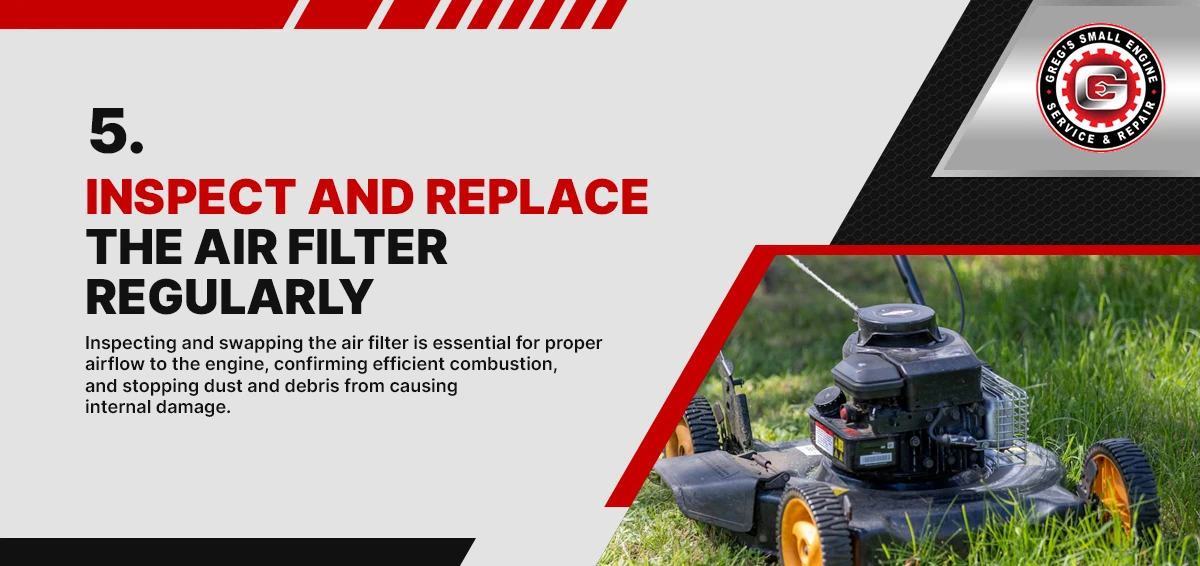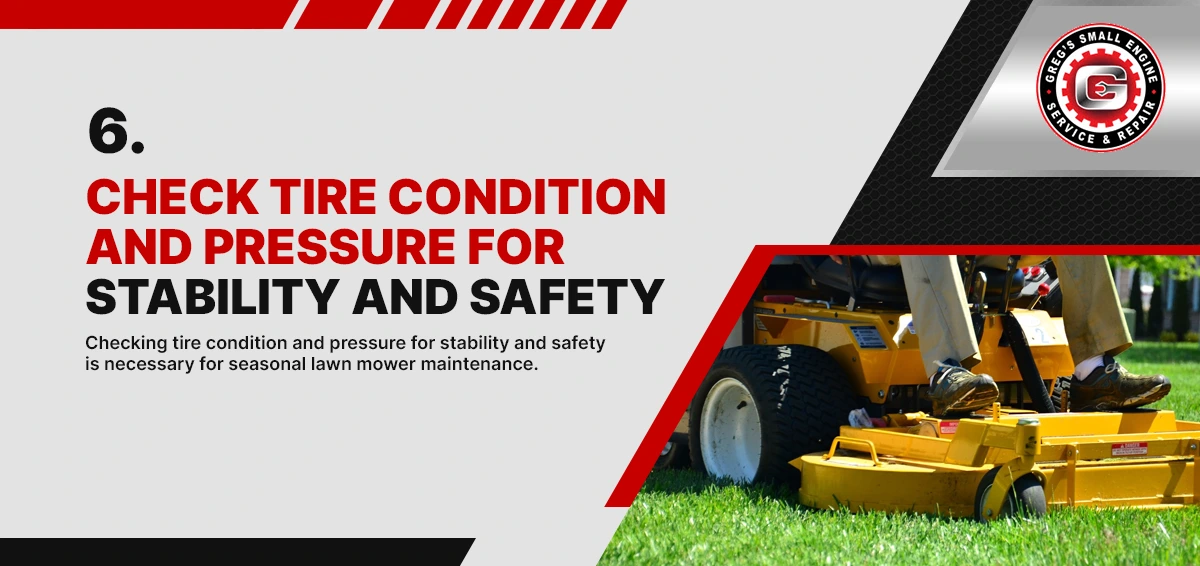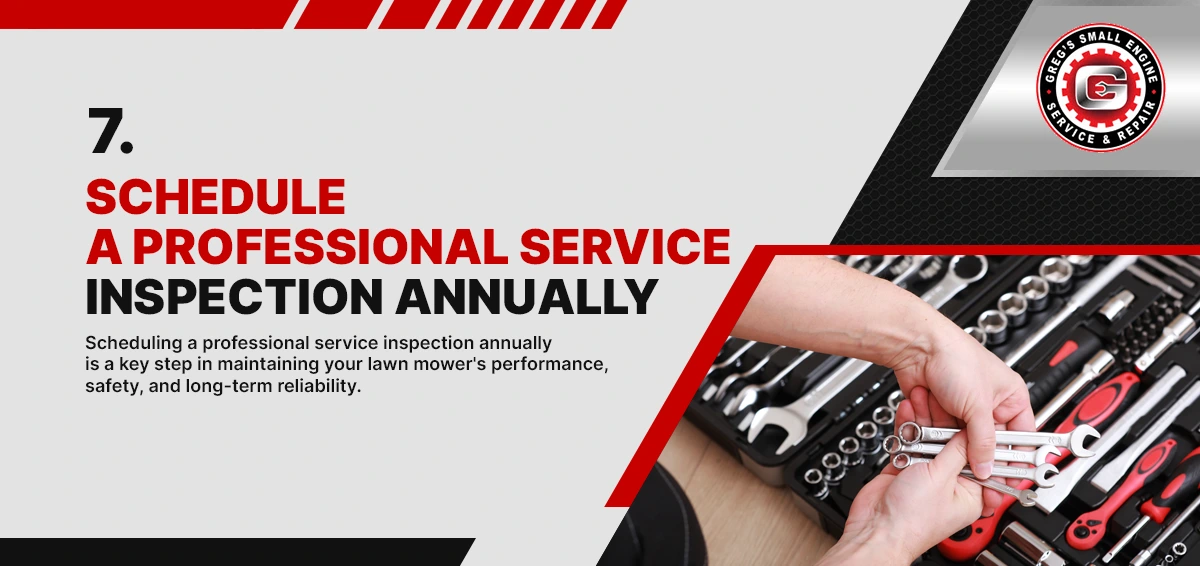Seasonal lawn mower maintenance checklist tasks are essential for ensuring your equipment’s reliable performance and longevity. Proper care at the start and end of each mowing season can prevent costly repairs, improve efficiency, and help your machine handle varying yard conditions. Regular maintenance is critical in keeping your lawn mower in optimal working order, from checking spark plugs and oil levels to sharpening blades and inspecting filters.
Neglecting routine service shortens your equipment’s life and impacts your lawn care’s quality. Whether preparing for spring mowing or storing your machine for winter, following a consistent maintenance routine is an investment in long-term performance. This guide outlines seven essential maintenance tips to protect your mower and keep it operating smoothly throughout the year.
1. Winterize Lawn Mower to Prevent Damage During Off-Season Storage
Properly winterizing your lawn mower to prevent damage during off-season storage is essential for maintaining long-term performance and reliability. When a mower is left unused for extended periods without preparation, internal components can deteriorate, fuel can degrade, and corrosion may develop.
To avoid these issues, follow a structured winterization process:
- Drain or Stabilize Fuel: Old fuel can break down and damage the carburetor. Either drain the tank completely or add a stabilizer and run the engine to circulate it
- Change the Oil: Dirty oil left in the engine can corrode internal parts. Replacing it before storage ensures clean lubrication when the mower is next used
- Disconnect the Battery (if applicable): For battery-powered mowers, disconnect the battery and store it in a cool, dry place to prevent power loss or damage
- Clean the Undercarriage and Blades: Remove grass clippings and debris to prevent rust and buildup
- Cover or Store in a Dry Location: Protect the mower from moisture and dust by storing it indoors or under a secure cover
Taking time to winterize your lawn mower safeguards its components from off-season wear, ensuring a smooth start-up and effective operation when the mowing season returns.
2. Summer Lawn Mower Tune-Up Steps for Peak Performance
Conducting routine summer lawn mower tune-up steps for peak performance is critical during the height of the mowing season. Extended use in warmer weather can strain your equipment, making regular maintenance essential to ensure reliable operation and effective lawn care.
A comprehensive summer tune-up should include the following:
- Inspect and Replace Air Filters: Dirty or clogged filters reduce airflow, causing the engine to overheat or lose power. Replace with a clean filter as needed
- Check and Change Spark Plugs: Faulty spark plugs lead to hard starts and poor engine efficiency. Inspect for wear or deposits and replace if necessary
- Sharpen and Balance Blades: Dull blades tear grass unevenly and strain the engine. Sharpen blades to ensure a precise cut and balance to reduce vibration
- Clean Cooling Fins and Engine Housing: Grass and debris can block airflow and cause the engine to overheat. Clear all buildup to maintain proper cooling
- Inspect Tires and Belts: Check for cracks, wear, and proper tension to support smooth movement and safe operation
Performing these tune-up steps at the start of summer promotes optimal cutting performance, prevents breakdowns, and extends the life of your lawn mower throughout the demanding mowing season.
3. How Often to Change Mower Oil by Season and Mower Type
Understanding how often to change mower oil by season and mower type is essential for maintaining engine health and consistent performance. Oil lubricates moving parts, reduces friction, and removes heat. Left unchanged, it loses its protective qualities, increasing the risk of wear or engine failure.
The frequency of oil changes depends on both the type of mower and seasonal usage patterns:
- Walk-behind gas Mowers: Change the oil every 25–50 hours of use or once per season, whichever comes first.
- Riding Mowers: Require an oil change approximately every 50–100 hours of use or at the start and end of the mowing season
- Commercial-Grade Mowers: Should be serviced more frequently due to heavier workloads—every 25–50 hours or monthly during peak use
- Electric Mowers: Do not require oil changes, but routine inspection of moving parts remains necessary
Seasonal adjustments are also necessary. Always change oil before winter storage to prevent internal corrosion, and consider a mid-season change if mowing conditions are especially dusty or humid.
Following the manufacturer’s guidelines and adjusting based on seasonal demands helps ensure consistent engine lubrication, reduces the risk of damage, and supports long-term mower reliability.
4. Clean the Undercarriage and Blades After Each Use
Cleaning the undercarriage and blades after each use is critical maintenance that helps preserve mower efficiency and prolong its service life. Grass clippings, dirt, and debris can accumulate beneath the deck and on the blades, leading to corrosion, decreased cutting performance, and uneven mowing.
Regular cleaning provides the following benefits:
- Prevents Corrosion: Moist grass and soil trapped under the deck can cause rust on metal components
- Improves Cutting Efficiency: Clean blades deliver a sharper, more even cut, reducing stress on the engine
- Reduces Grass Buildup: Prevents clogging that can affect airflow and reduce discharge performance
- Extends Blade Lifespan: Frequent cleaning slows wear and minimizes the need for early blade replacement
Disconnect the spark plug or battery before tilting the mower to clean properly. Use a plastic scraper or brush to eliminate caked debris from the undercarriage and blade surfaces. Avoid using water directly on engine components to prevent moisture damage.
Incorporating this routine after every mowing session ensures smoother operation, maintains lawn quality and protects the mower’s structural integrity over time. Consistent cleaning supports reliable performance throughout the mowing season.
5. Inspect and Replace the Air Filter Regularly
Inspecting and swapping the air filter is essential for proper airflow to the engine, confirming efficient combustion, and stopping dust and debris from causing internal damage. A clogged or worn-out air filter can lead to reduced power, increased fuel consumption, and difficulty starting the mower.
Air filters should be checked regularly during the mowing season, especially in dusty or dry environments. Depending on usage and manufacturer recommendations, replacement may be required every 25 hours of operation or at least once per season.
Key reasons to inspect and replace the air filter include:
- Improved Engine Performance: Clean filters allow consistent airflow, supporting stable engine output
- Reduced Fuel Usage: A properly functioning filter helps the engine burn fuel more efficiently
- Protection Against Contaminants: Prevents dirt, grass, and debris from entering the engine
- Easier Starting: A clean filter helps maintain optimal air-to-fuel ratio, supporting reliable ignition
To inspect, remove the air filter cover, and examine the filter for discoloration or blockage. Foam filters can often be cleaned and reused, while paper filters typically require replacement. Maintaining the air filter as part of routine mower care enhances performance and extends engine life.
6. Check Tire Condition and Pressure for Stability and Safety
Checking tire condition and pressure for stability and safety is necessary for seasonal lawn mower maintenance. Worn or underinflated tires can compromise traction, reduce cutting accuracy, and place additional strain on the mower’s drivetrain and steering components.
Tires should be inspected before each season and periodically throughout regular use. This ensures the mower remains balanced and operates smoothly on uneven terrain.
Key inspection points include:
- Tread Wear: Look for shallow or uneven tread patterns that may affect grip and stability
- Cracks or Dry Rot: Check for sidewall damage, splitting, or signs of aging that may lead to sudden failure
- Air Pressure: Refer to the manufacturer’s recommended PSI and use a tire gauge to confirm each tire is properly inflated
- Valve Condition: Inspect valve stems for leaks or deterioration that could lead to pressure loss
Underinflated tires can cause uneven cutting height and affect mower control, while overinflated tires may lead to a harsh ride and reduced ground contact. Maintaining proper tire conditions enhances operational safety, more consistent mowing results, and extended equipment longevity. Routine tire care should be integrated into every seasonal inspection checklist.
7. Schedule a Professional Service Inspection Annually
Scheduling a professional service inspection annually is a key step in maintaining your lawn mower’s performance, safety, and long-term reliability. Even with consistent at-home maintenance, specific mechanical issues or wear may go unnoticed without a trained technician’s assessment.
An annual inspection typically includes the following:
- Engine Diagnostics: Checking compression, spark performance, and fuel delivery systems
- Drive System Evaluation: Inspecting belts, gears, and transmission components for wear or misalignment
- Blade and Deck Inspection: Assessing blade sharpness, balance, and deck integrity
- Fluid Checks and Replacements: Verifying oil levels, fuel quality, and lubrication points
- Battery and Electrical Testing: Ensuring reliable starts and stable operation for electric-start models
Professional technicians also spot early signs of component failure and can make adjustments that improve efficiency and reduce strain on the mower. This preventative approach minimizes the risk of breakdowns during peak mowing season and can extend the equipment’s usable lifespan.
It is recommended to schedule service during the off-season or early spring, allowing ample time for any necessary repairs or part replacements. Annual inspections are a practical investment in maintaining performance standards and preserving your mower’s operational value over time.
Conclusion
Maintaining your lawn mower throughout each season is one of the most effective ways to ensure reliable performance, minimize unexpected repairs, and extend the overall life of your equipment. By following these seven essential seasonal maintenance tips—from winter storage preparation to summer tune-ups—you’re investing in your mower’s efficiency, safety, and durability. Routine care helps protect your machine’s internal components and results in cleaner cuts and a healthier-looking lawn year-round.
If you’re ready to eliminate the guesswork from mower maintenance, Greg’s Small Engine Service & Repair is here to help. Contact us today to schedule expert service and keep your mower running like new: https://gregsmallengine.com/contact-us/ or call us at .775-790-0435

